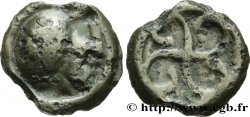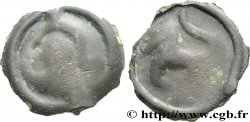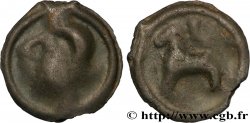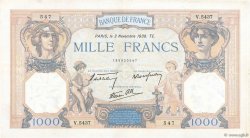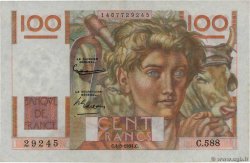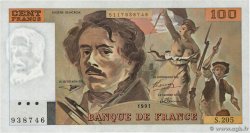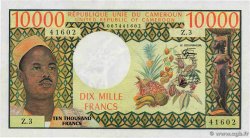v19_0437 - BITURIGES CUBI, UNBEKANNT Bronze au loup et au pégase
MONNAIES 19 (2004)
Startpreis : 135.00 €
Schätzung : 300.00 €
Erzielter Preis : 204.00 €
Anzahl der Gebote : 2
Höchstgebot : 261.00 €
Startpreis : 135.00 €
Schätzung : 300.00 €
Erzielter Preis : 204.00 €
Anzahl der Gebote : 2
Höchstgebot : 261.00 €
Type : Bronze au loup et au pégase
Datum: Ier siècle avant J.-C.
Metall : Potin (Kupfer-Zinn-Blei)
Durchmesser : 18 mm
Stempelstellung : 8 h.
Gewicht : 3,77 g.
Seltenheitsgrad : R3
Kommentare zum Erhaltungszustand:
Exemplaire au droit un peu mou, mais au revers particulièrement bien conservé. Patine vert sombre. Léger coup de burin sur le revers
N° im Nachschlagewerk :
Vorderseite
Titulatur der Vorderseite ANÉPIGRAPHE.
Beschreibung Vorderseite Tête de loup à droite, comme tirant la langue, bourrelet périphérique.
Rückseite
Titulatur der Rückseite ANÉPIGRAPHE.
Beschreibung Rückseite Jument ailée à droite, la queue en forme d’esse, bourrelet périphérique.
Kommentare
Cet exemplaire est très proche de celui proposé dans MONNAIES XV, n° 414. S'il est admis que ce monnayage est frappé sur des flans préalablement coulés (indéniable avec le droit du bronze à l'M proposé plus haut), cet exemplaire a toutes les caractéristiques d'un potin. Le revers présente effectivement un bourrelet périphérique bien net et les deux penons de coulée à 12 et 6 heures, sur lesquels aucune trace de frappe n'est visible. Pour un même type monétaire, il existerait donc une série de bronze et une autre de potin. Ce phénomène est déjà connu pour les monnaies à légende TVRONOS CANTORIX et pour les monnaies des Lingons dites aux trois poissons (cf. MONNAIES XV, n° 831-839).
This example is very close to the one proposed in COINS XV, No. 414. If it is accepted that this coinage is struck on previously cast flans (undeniable with the right of bronze to the M proposed above), this example has all the characteristics of a potin. The reverse indeed has a very clear peripheral rim and the two casting pennons at 12 and 6 o'clock, on which no trace of striking is visible. For the same monetary type, there would therefore exist a series of bronze and another of potin. This phenomenon is already known for the coins with the legend TVRONOS CANTORIX and for the coins of the Lingons known as with the three fish (cf. COINS XV, No. 831-839)
This example is very close to the one proposed in COINS XV, No. 414. If it is accepted that this coinage is struck on previously cast flans (undeniable with the right of bronze to the M proposed above), this example has all the characteristics of a potin. The reverse indeed has a very clear peripheral rim and the two casting pennons at 12 and 6 o'clock, on which no trace of striking is visible. For the same monetary type, there would therefore exist a series of bronze and another of potin. This phenomenon is already known for the coins with the legend TVRONOS CANTORIX and for the coins of the Lingons known as with the three fish (cf. COINS XV, No. 831-839)







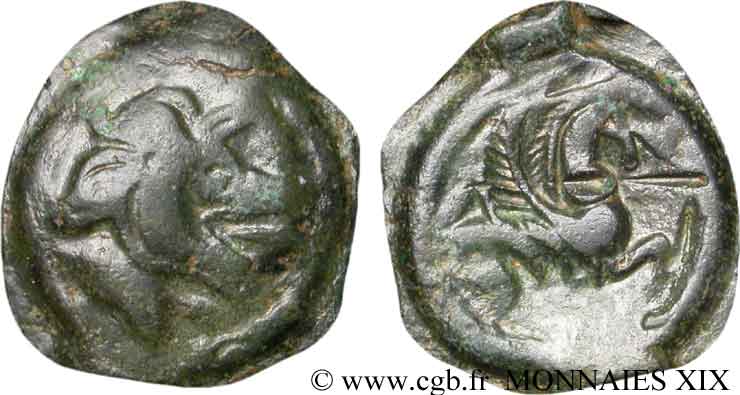
 Berichten über einen Fehler
Berichten über einen Fehler Die Seite drucken
Die Seite drucken Teilen meiner Auswahl
Teilen meiner Auswahl Stellen Sie eine Frage
Stellen Sie eine Frage Einlieferung/Verkauf
Einlieferung/Verkauf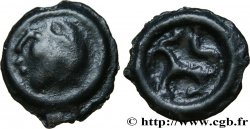
 Details
Details
